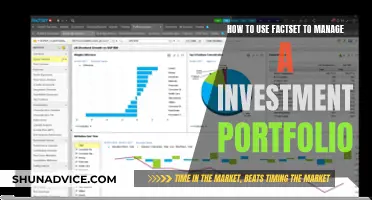
An investment presentation is a strategic tool used by startups and businesses to communicate their vision, business model, market opportunity, and financial projections to potential investors. It is designed to persuade investors to fund the company by clearly articulating its value proposition and growth potential.
The primary purpose of an investment presentation is to secure funding from venture capitalists, angel investors, or other financial backers. It serves as a visual and narrative representation of a company's business plan, highlighting its most compelling aspects to attract investor interest.
Creating a compelling investment presentation involves more than good storytelling. It requires a well-structured approach that highlights the company's strengths, market opportunities, and financial projections. This includes key elements such as:
- A strong introduction with an elevator pitch
- Problem statement and solution description
- Market opportunity and target audience
- Business model and revenue streams
- Financial projections and funding requirements
- Team introduction and qualifications
- Traction and milestones
- A clear call to action
| Characteristics | Values |
|---|---|
| Introduction | Begin with a concise and engaging elevator pitch that captures the essence of your business. |
| Problem Statement | Clearly articulate the problem your product or service addresses. |
| Solution Description | Explain how your product or service solves the problem and any unique features or innovations. |
| Target Market | Define your ideal customer and explain why your product is well-suited to meet their needs. |
| Market Opportunity | Present data on your target market's size and growth potential. |
| Business Model | Detail how your company makes money, including revenue streams, pricing strategies and the scalability of your model. |
| Go-to-Market Strategy | Outline your customer acquisition plans and sales channels. |
| Competitive Analysis | Present an analysis of your competitors, detailing their strengths and weaknesses and how your business stands out. |
| Traction and Milestones | Share any significant achievements, such as user growth, revenue milestones, partnerships or product developments. |
| Financial Projections | Present realistic financial forecasts for the next 3-5 years, including revenue, expenses, profit margins and key financial metrics. |
| Funding Requirements | Clearly state the amount of funding you are seeking, how it will be used and the expected outcomes. |
| Team Introduction | Highlight key members of your team, emphasising their relevant experience and skills. |
| Conclusion | Clearly state what you are asking from investors and the next steps. |
What You'll Learn
- Introduction: Elevator pitch, company mission, and key team members
- Problem and Solution: Define the problem and articulate your unique solution
- Market Opportunity: Present data on market size, growth potential, and target audience
- Business Model: Outline revenue streams, pricing strategy, and customer acquisition plans
- Financial Projections: Provide forecasts, funding requirements, and key financial metrics

Introduction: Elevator pitch, company mission, and key team members
Elevator Pitch
Our elevator pitch is simple: we aim to construct a portfolio of the safest holdings with the highest returns. We will divide our $100,000 investment between quality growth, momentum growth, and dividend income. We believe that diversification reduces unsystematic risk and that each holding should have a weighted percentage based on the criteria set forth for a given investment objective.
Company Mission
Our mission is to deliver strong returns to our investors while maintaining a low-risk profile. We will achieve this by investing in a range of stocks and mutual funds with strong historical performance and growth potential. Our investment strategy emphasizes a long-term focus, seeking to maximize returns while minimizing risk.
Key Team Members
- [Name] – [Role], with [number of years] of industry experience. Expertise includes [area of expertise 1], [area of expertise 2], and [area of expertise 3].
- [Name] – [Role], formerly of [company 1] and [company 2]. Brings [number of years] of experience in [industry 1] and [industry 2].
- [Name] – [Role], an experienced [area of expertise] professional with a strong track record in [specific skill 1] and [specific skill 2].
Our team combines a diverse range of skills and expertise, ensuring we can effectively manage your investment portfolio and make informed decisions to drive strong returns.
How to Make Your Savings Work for You
You may want to see also

Problem and Solution: Define the problem and articulate your unique solution
The problem statement is a crucial aspect of your investment presentation. It allows you to articulate the market problem you aim to address and explain how your product or service offers a unique solution. Begin by clearly stating the problem and providing real-world examples or data to illustrate its significance. You may also want to share any personal stories or experiences that inspired you to launch your startup and develop this solution.
When explaining your solution, ensure you highlight any unique features or innovations that set you apart from competitors. Emphasise the financial upside of your idea and provide evidence that your solution works. Share client reviews, testimonials, data, case studies, and customer success stories to make investors more inclined and confident.
For instance, let's say you are developing a customer success platform that addresses the lack of data visibility in sales organisations. Your problem statement could be:
> "Sales teams often struggle with a lack of data visibility, leading to missed opportunities and inefficient sales processes. Our customer success platform aims to solve this problem by providing a comprehensive data analytics solution, offering sales teams enhanced visibility and insights to make more informed decisions."
Additionally, you could share a story about your experience as a customer success representative and how you recognised this pain point, further emphasising your passion and expertise in solving this issue.
Remember to keep your problem statement concise and impactful, ensuring that investors can quickly grasp the problem and your proposed solution.
Accessing Your ENT Investment Portfolio: A Step-by-Step Guide
You may want to see also

Market Opportunity: Present data on market size, growth potential, and target audience
When creating an investment portfolio presentation, it is crucial to dedicate a section to market opportunity, where you present data on market size, growth potential, and target audience. Here are some detailed paragraphs to help you craft this section effectively:
Market Size and Growth Potential:
The market size and growth potential are critical factors in evaluating the attractiveness of an investment opportunity. Present data and insights that demonstrate the scope and potential of the target market. For instance, you can include statements such as, "Our target market is the luxury property industry, valued at USD 93.37 billion, and we project a compound annual growth rate (CAGR) of 25.3% in the next five years." Provide charts or graphs that showcase the historical and projected growth trends to make the opportunity more tangible for investors.
Understanding the Target Audience:
It is essential to define your target audience and explain why your product or service is well-suited to meet their needs. Discuss the demographics, psychographics, and specific pain points of your ideal customers. For example, "Our target audience comprises luxury property owners who struggle with effective management solutions. By understanding their unique challenges, we have crafted a solution that revolutionizes how they manage their properties." This approach demonstrates a deep understanding of your market and reinforces the potential for a successful venture.
Addressing Market Trends and Dynamics:
Support your market opportunity by presenting any emerging trends or industry dynamics that work in your favor. For instance, you might say, "With the increasing demand for sustainable and tech-driven solutions in the property management space, our innovative platform is well-positioned to capitalize on this shift in the market." Ensure you have data and research to back up your claims, making your opportunity more compelling and less risky for investors.
Competitive Landscape and Differentiation:
While the focus is on your target market, it is also essential to address the competitive landscape briefly. Explain how your offering differs from or improves upon existing solutions in the market. For example, "While there are other property management platforms, our solution is the first to offer AI-driven analytics, providing our clients with unprecedented insights. This unique value proposition sets us apart and positions us to capture a significant market share." This approach showcases your understanding of the competition and highlights the potential for strong market performance.
Financial Projections and Market Share:
Provide financial projections that showcase the potential return on investment. Discuss the expected revenue, profit margins, and market share you aim to achieve within a specific timeframe. For instance, "With our innovative platform and targeted marketing strategy, we project capturing 20% of the luxury property market within the next three years, resulting in an estimated revenue of $X million." This information gives investors a concrete understanding of the financial opportunity and the potential returns they can expect.
Remember to tailor your market opportunity section to your specific investment proposal, supporting it with relevant data, market research, and industry insights. By presenting a compelling case for market size, growth potential, and target audience understanding, you will enhance your investment portfolio presentation and increase your chances of securing the funding you need.
Saving and Investing: Pros, Cons, and Your Money
You may want to see also

Business Model: Outline revenue streams, pricing strategy, and customer acquisition plans
Revenue streams are the lifeblood of a business, providing essential funds for operations, growth, and innovation. A business model should clearly outline the revenue streams that will attract enough customers to sustain the business.
Revenue Streams
Revenue streams refer to the diverse sources of income from which a business generates revenue. These can be classified into different types:
- Transaction-based revenue: Income from one-time customer payments for goods or services. Examples include e-commerce sales, retail store sales, ticket sales, and consulting services.
- Recurring revenue: Ongoing payments from customers for continued services or after-sale support. Examples include subscription fees and membership fees.
- Project-based revenue: Earnings from one-time projects with existing or new customers. Examples include construction projects and event planning.
- Service-based revenue: Income from providing services to customers, typically calculated based on time spent. Examples include consulting services, legal services, and personal training sessions.
Pricing Strategy
The pricing strategy is a critical component of the revenue model and directly impacts how much revenue a business can generate. Different pricing mechanisms include:
- Fixed pricing: Predetermined and non-negotiable prices for products or services.
- Dynamic pricing: Real-time price adjustments based on demand, market conditions, or customer behavior.
- Product feature-dependent pricing: Offering different price points for variations of a product or service with unique features.
- Customer segment-dependent pricing: Setting different prices for various customer groups based on characteristics or demographics.
Customer Acquisition Plans
To attract customers and generate revenue, businesses can employ various strategies:
- Marketing and advertising: Promoting the business and its products or services to reach and attract potential customers.
- Sales and distribution: Establishing an effective sales process and distribution network to reach customers and close deals.
- Customer engagement: Building relationships with customers, understanding their needs, and providing value.
- Competitive pricing: Offering prices that are competitive in the market and provide value to customers.
- Bundling and promotions: Offering bundled products or promotions to increase sales and attract customers.
Young Adults: Best Places to Invest Your Savings
You may want to see also

Financial Projections: Provide forecasts, funding requirements, and key financial metrics
When presenting an investment portfolio, it is important to provide financial projections, including forecasts, funding requirements, and key financial metrics. This information gives investors an understanding of the potential risks and returns associated with the investment opportunity. Here are some tips and suggestions for crafting this section of your presentation:
Start with a Clear Objective
Explain the purpose of your financial projections. Are you seeking to demonstrate the potential profitability of the investment? Are you highlighting the financial viability of your business plan? Are you focusing on short-term gains or long-term growth? Being clear about your objectives will help guide the creation of your financial projections and ensure that your message is effectively communicated to potential investors.
Provide Detailed Forecasts
Investors will want to see data and forecasts that support your investment thesis. This includes revenue projections, cost estimates, and expected returns. Break down your forecasts into logical components, such as revenue streams, customer acquisition costs, and operational expenses. Provide a timeline for your forecasts, typically covering the short-term (1-2 years) and medium-term (3-5 years). Be sure to justify your assumptions and provide context for your numbers.
Discuss Funding Requirements
Explain how much funding you are seeking and how you plan to use it. Outline the key milestones or goals that the funding will help you achieve. Be specific about how the investment will be allocated, including any major expenses or investments you anticipate. This demonstrates to investors that you have a clear plan for utilizing their capital effectively.
Highlight Key Financial Metrics
Identify the most important financial metrics that investors should focus on. This could include metrics such as return on investment (ROI), cash flow, profitability ratios, or customer acquisition cost (CAC). Explain why these metrics are significant and how they tie into the overall financial health and prospects of your business or investment opportunity.
Utilize Visual Aids
Visual aids such as charts, graphs, and tables can help illustrate your financial projections and make complex information more digestible for your audience. Consider using a profit and loss statement, balance sheet, or cash flow analysis to present your financial data. Ensure that your visuals are well-designed, easy to understand, and integrated seamlessly into your presentation slides.
Scenario Planning
In addition to providing base-case forecasts, consider presenting sensitivity analysis or scenario planning. This involves examining different potential outcomes based on key variables. For example, you could present best-case, expected, and worst-case scenarios to show how changes in assumptions can impact the financial results. This approach demonstrates to investors that you have thoroughly considered the risks and opportunities associated with the investment.
Know Your Audience
Tailor your financial projections to the specific audience you are presenting to. Different investors may have varying levels of financial knowledge or expertise. Adjust your level of detail and the complexity of your explanations accordingly. If you are presenting to early-stage investors, they may be more interested in your assumptions and the underlying logic behind your financial projections.
Remember, the goal of this section is to provide potential investors with the financial information they need to make an informed decision. Ensure that your forecasts are well-supported, your funding requirements are justified, and your key financial metrics are clearly communicated. By effectively presenting your financial projections, you can build trust and confidence in your investment opportunity.
Savings vs Investment: Imbalance and its Impact
You may want to see also







